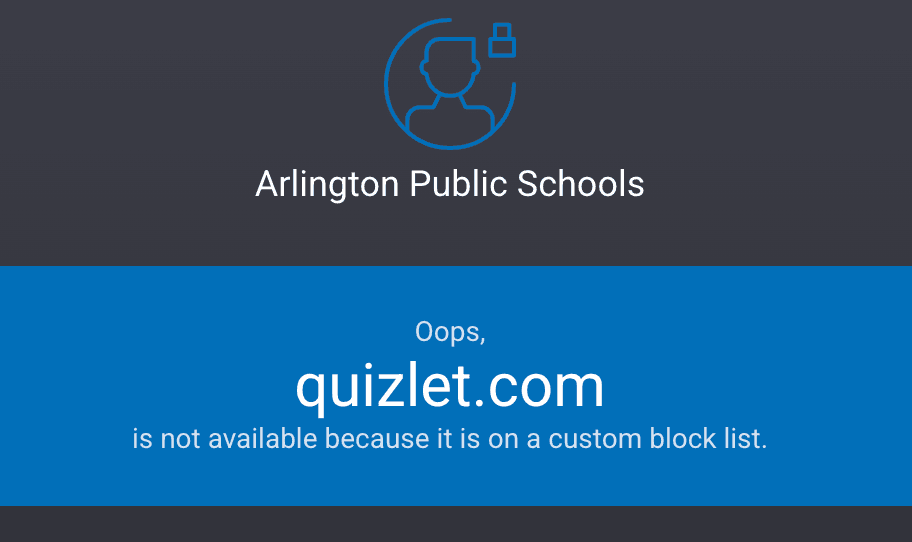Throughout September and October of the 2018-19 school year, school-issued technology across Arlington Public Schools (APS) has been afflicted with numerous malfunctions. These have included MacBooks spontaneously restarting themselves and GlobalProtect, the network filtration service used by APS on school computers, disconnecting the computers from the internet.
The issues that have arisen can be primarily attributed to the reimaging process performed across APS at the end of the 2017-18 school year. This process required students to turn in their laptops to APS technicians and network analysts, who then wiped the laptop of its data and installed an image issued by the Service Support Center, a branch of APS Information Services, so that all computers were essentially clones of one another.
Information Services is the department of APS that handles the function of technology as it pertains to education throughout the county and is separate from the Instructional Technology Coordinator (ITC). The ITC is responsible for the integration and management of technology within specific schools of APS and works in coordination with the Service Support Center while supervised by the principal of his or her respective school.
According to Keith Reeves, the ITC of Discovery Elementary School and the Chairperson of the Board of Directors of Virginia’s State Educational Technology Association (VSTE), the image that was issued was premature and not sufficiently tested by those at the Service Support Center, which resulted in the aforementioned issues.
“[The Service Support Center] did not test [the image] accurately. They think that taking the device and getting it to a point where they think it works, sitting at their desk [on the networks of] Central Office is the same thing as field testing. It is not,” Reeves said.
The subsequent result of these complications has been widespread frustration amongst APS students, faculty, ITCs and parents. Yorktown Principal Bridget Loft shares the grievances of many throughout the county who have been inconvenienced by the ordeal.
“I find the entire [reimaging] process incredibly frustrating… there has been such a maelstrom of issues with the reimaging that Information Services has found themselves in a perpetually reactive state,” Loft said.
In response to the MacBook issues, Information Services worked with the vendors of the programs causing the various problems to find a technical solution. They have also sent out seven separate messages on APS School Talk, the messaging system used by APS for mass communication with parents, regarding various problems and how they are being resolved. These notes, sent by Raj Adusumilli, the Assistant Superintendent for Information Services, and Terance Proctor, the Director of the Service Support Center, told students with laptop malfunctions to “contact their school’s ITC for continued support and assistance.” According to Samuel Wightman, the ITC of Yorktown, ITCs were never informed of how to aid students with these specific laptop issues. Proctor did not respond to requests for comment on this article.
“The ITCs never received this information beforehand. When the students, parents and teachers came and said ‘Hey Mr. Wightman, what is going on?’ I did not have an answer for them. My best response is that they should ask the person who sent that email,” Wightman said.
Tyler Witman, the ITC of H-B Woodlawn Middle and High Schools, shared Wightman’s frustration with the communication between Information Services and the schools of APS.
“ITCs are in a weird liaison position between schools and Information Services and if we do not have all of the information [from Information Services] and are expected to communicate with parents, students and staff, then it all breaks down,” Witman said.
The lack of dialogue between Information Services and schools within APS regarding technology decisions is another primary cause of recent issues with APS technology. Reeves argues that this absence of communication played a role in the construction of an ill-fated image.
“The needs that students and teachers have, [Information Services] does not seem to even be aware of them, let alone know how to configure things in [an appropriate] way,” Reeves said.
Information Services’ process of computer image construction did include consultation of high school ITCs, but the impact was minimal. When the image was being constructed in the latter half of the 2017-18 school year, a meeting was held between the high school ITCs and Information Services to talk about the imaging process. According to Wightman, this meeting resulted in more questions than answers, with the ITCs gaining little information.
“The end result of that meeting was absolutely nothing because we were told that there was no image ready yet, we cannot test it yet and [Information Services] does not have any information at this time,” Wightman said.
Adusumilli also recognizes communication as an issue, but argues that this issue is existent between students and technology support staffers as opposed to between Information Services and the schools that they serve.
“There is clearly an opportunity for improvement in the communications channels between students and the staff that support their technology …. This will be a priority for our department as we move forward in improving services by balancing safety, reliability and usefulness,” Adusumilli said.
The construction and implementation process of the reimage has shined a light on the umbra that Information Services and the Service Support Center has cast over technology decisions in APS. Loft believes that these shadowy tendencies are counterproductive to the overarching goal of Information Services to provide information.
“What [Information Services] needs to do is get themselves out there, be honest and transparent about what the issue is and tell people how they are going to solve it,” Loft said.
The fact that those in charge at Information Services have backgrounds primarily in technology instead of education can be identified as another origin of difficulty. As listed in the necessary qualifications for an ITC by APS, ITCs are required to have at least a Bachelor’s Degree in Instructional Technology, Education or any other field that would build a strong foundation to fulfill the instructional and technological portions of the job. Also, approximately 70% of an ITC’s time is meant to be spent on teacher leadership in relation to the integration of technology within the classroom and curriculum, as stated in APS’s Classification Specifications of the ITC. However, leaders at Information Services such as Adusumilli, who spent eleven years at the Oracle Corporation prior to joining APS, are not required to have such experience in the utilization of technology within an instructional environment.
“The individuals who are making policy and managerial decisions are not themselves educators .… There is no mechanism for we who are professional educators to get our voices to them. They do not understand teaching and learning,” Reeves said.
Effects of the various technology issues have also been felt throughout classrooms across APS. Students and teachers have been forced to adapt based on the availability of operating technology and work through malfunctions with computers that have been heavily incorporated into curriculum by APS.
When students were working on their laptops in the classroom, teachers such as English teacher Jeffrey Bunting noticed how flaws in operation directly hindered student’s ability to complete assignments at their full potential.
“The issue with computers restarting constantly would really sap student’s motivation. When students were working on PDFs in class and did not save their work, it would be erased when the computer restarted every 15 minutes or so,” Bunting said.
As computers were not able to connect to the internet, teachers who had planned lessons and homework around the usage of MacBooks were left to improvisation. Without prior notice that computer usage would not be available, teachers had to compromise carefully planned instruction and unnecessarily acclimate to new circumstances. Furthermore, Canvas, the centralized online home of academia used by APS for students to find and complete assignments, was not accessible during the outages of computer operation.
“I use Canvas for posting all of my classroom resources as well as assignment instructions .… When I have 50 kids that cannot do their homework, I then have to figure out how to accommodate,” history teacher Ryan Zito said.
As a result of not being able to complete online tasks, students fell behind in the completion of work despite teachers’ best efforts to adapt on the fly.
“I was not able to complete online assignments without a functioning computer. While my teachers did a very good job of accommodating to the tech issues by assigning hard copies of work, classes still fell behind from not being able to use the computers,” junior William McClennan said.
As instructed in the School Talks sent by Adusumilli and Proctor, students who still had computer issues after the problems had been largely resolved were to turn their computers in to the ITCs of their respective schools to be re-reimaged. No clear backup plan was put in place for students without laptops to still participate in technology-based classroom activities, aside from individual teachers signing out laptops for their respective classes. As a result of this, students were unable to complete certain schoolwork for an additional amount of time.
“GlobalProtect on my computer was not working and I could not connect to the internet. It had to be reimaged again and I did not have my laptop for two weeks at the start of the year,” freshman Sofia Burgin said.
In retrospect, the entire ordeal illuminates how deeply rooted technology has become in contemporary education. Since APS deployed their one-to-one program in 2014, which provides every student from grades 2 through 12 with a personal digital learning device, technology has had a major influence in the shaping of curriculum and student development across the county. As Information Services continues to manage the technical side of APS devices, school officials such as Loft feel that the essential requisites for students and teachers to fully utilize technology are not being sufficiently met.
“Technology is a tool for learning. It can enhance learning and open horizons .… The schools and Information Services have fundamentally different perspectives on the daily requirements of our kids and our teachers as far as the use of these tools,” Loft said.
For better or for worse, it is an undeniable fact that technology has seeped into almost all aspects of daily life. In the context of education, technology gives students an opportunity to personalize learning and have access to a wider array of resources that supplement traditional classroom schooling. Students become reliant on the accessibility and dependability of technology as it becomes further integrated into their learning. When the traditionally stable resource that is technology is cut off, as it was at the beginning of the year, obstruction of the learning that technology was meant to enable ensues. In this ordeal, Information Services and the Service Support Center displayed how failures in management lead to widespread dissatisfaction and hindrance of their constituents within the schools. When schools of APS are subject to following decisions made for them by outer entities, mismanagement and an overall decline in the quality of education will take place.







































